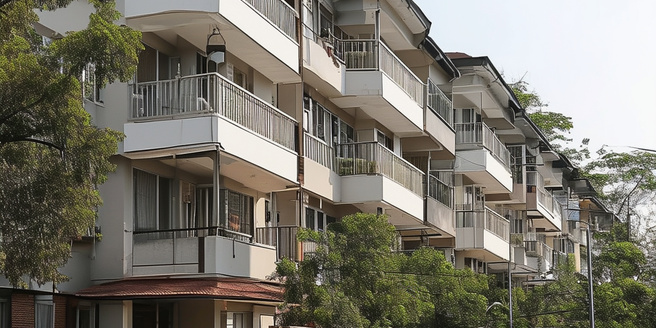Challenges In Enforcing Rent Reductions

Understanding Rent Reduction Policies
Rent reduction policies are designed to provide financial relief to tenants facing economic hardships. These policies vary by location, incorporating different criteria for eligibility and specific percentages for reductions. Understanding these policies is essential for both landlords and tenants to navigate their rights and responsibilities. Typically, these policies are enacted during economic downturns or emergencies, such as a pandemic, and aim at preventing tenants from becoming homeless due to inability to pay rent. It’s essential for those affected to familiarize themselves with the qualification requirements and application processes outlined by the local housing authorities. Furthermore, these policies often include provisions on how to apply, what documentation is necessary, and potential timelines for receiving assistance, helping ensure that eligible tenants can successfully access the benefits provided by rent reduction legislation.
Legal Framework and Compliance Issues
The legal framework surrounding rent reductions is complex and varies significantly across different jurisdictions. These regulations usually involve a combination of federal, state, and local laws, requiring landlords to navigate various compliance issues. Key components include tenant eligibility criteria, documentation requirements, and enforcement mechanisms. Landlords must ensure adherence to local ordinances and state regulations which may mandate specific rent reduction percentages or conditions under which reductions can be implemented. Failure to comply with these regulations can result in legal consequences, including fines or other penalties. Additionally, landlords may be required to provide evidence of compliance and demonstrate good faith efforts to communicate with tenants regarding rent adjustments. Understanding the intricacies of these legal frameworks is crucial to fostering fair practices and avoiding disputes potentially leading to litigation.
Landlord and Tenant Negotiation Dynamics
The negotiation dynamics between landlords and tenants play a pivotal role in the implementation of rent adjustments. While legal frameworks provide guidelines, the success of rent reductions often hinges on effective communication and negotiation skills. Landlords and tenants may have divergent interests—the former seeks to maintain property income, while the latter aims to reduce living costs. Effective negotiation involves compromise, where both parties come to a mutually beneficial arrangement. This could involve extending the lease term for reduced rent, agreeing on temporary or conditional reductions, or other creative financial arrangements. Building trust and maintaining open lines of communication are critical for fostering cooperative relationships. Tenants should approach negotiations with all necessary documentation and a clear understanding of available policies, ensuring a fact-based approach that can facilitate amicable agreements with landlords.
Economic Implications of Rent Adjustments
The economic implications of implementing rent adjustments can be far-reaching and impact both landlords and tenants. For tenants, rent reductions can provide critical financial relief that allows them to allocate resources towards other essential needs, thus sustaining their standard of living during challenging times. Conversely, for landlords, while rent reductions may stabilize tenant retention and occupancy rates, they can also lead to decreased revenue and cash flow problems. Property owners may face challenges in meeting mortgage obligations and maintaining property value. From a broader perspective, widespread rent reductions can affect real estate market dynamics, potentially leading to valuation shifts and influencing investment trends. Policymakers must weigh these economic impacts when designing rent reduction frameworks, ensuring that they support both tenant welfare and the sustainability of property markets in the long term.
Case Studies of Successful Implementations
Examining case studies of successful rent reduction implementations can provide valuable insights for future policy development. In various regions, collaborative efforts between governments, landlords, and tenant advocacy groups have yielded positive outcomes. For example, in response to economic downturns, some cities have enacted temporary rent relief programs that involve comprehensive eligibility verification processes and strategic allocation of financial resources. These initiatives have resulted in reduced eviction rates and stabilized housing markets. Case studies highlight the importance of clear communication channels and robust support systems to assist tenants effectively. Additionally, flexible approaches that consider both immediate relief and long-term sustainability have proven successful. By learning from these examples, stakeholders can develop well-informed strategies that address the diverse challenges associated with enforcing rent reductions, ensuring equitable access to housing for all affected populations.
Future Outlook and Policy Recommendations
The future outlook for rent reduction policies is evolving in light of changing economic conditions and housing market dynamics. Policymakers are increasingly focused on developing adaptive strategies that can quickly respond to tenant needs during crises. Recommendations for future policies include enhancing communication between government agencies and stakeholders to ensure transparency and accountability. Additionally, increasing funding for rent subsidy programs and creating flexible criteria that can accommodate a broader range of economic circumstances could prove beneficial. Innovative solutions, such as leveraging technology for efficient application processing and fostering public-private partnerships, may enhance the effectiveness of these policies. As housing challenges persist, there is an ongoing need for comprehensive policy frameworks that not only address immediate rent reduction requirements but also contribute to long-term housing affordability and stability.